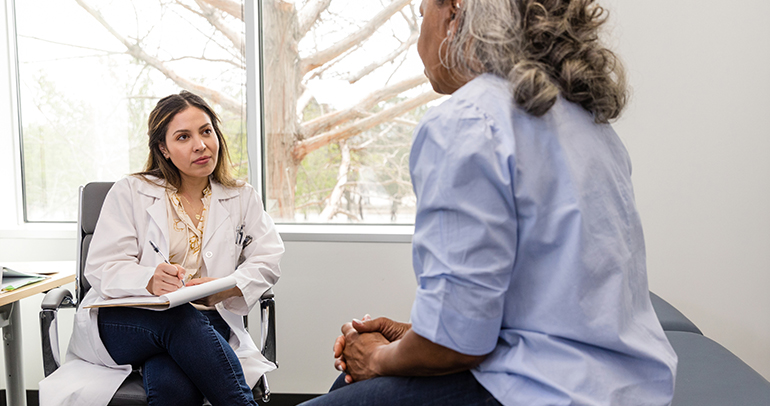
Seminal study identifies unmet needs as perceived by cancer patients
I was just reading a wonderful article by Liam Davenport titled “Cancer Patients Report Lack of Info and Support” published in August, which summarizes some of the key findings from an All.Can-sponsored survey conducted with almost 4,000 cancer patients across 10 countries.
In a refreshing twist, the researchers chose to focus on the patients’ perspective on how to make their cancer care more efficient, identifying what is most important to patients across the whole “continuum of care” and understanding how it impacts their lives.
Post-Treatment Period Emerges as An Area for Greater Support
As noted in the article, 39% of all respondents (31% in US) assert that they feel they lack support when it comes to managing any ongoing disease symptoms of adverse events. When asked to expound on that in the survey’s open-ended questions, patients expressed confusion about what to do when experiencing side effects and feel they haven’t been given a clear “plan.” I’ve personally heard this sentiment echoed in patient interviews as well. Patients are not sure whether something they are experiencing is a symptom of the disease or a side effect of their medication. This feeling is exacerbated if they are on multiple medications, making it difficult or impossible to tell which medication is having what effect.
Patients have also told me that they have a visceral fear of their cancer recurring and are often not sure how to differentiate a medication side effect from a potential sign of recurrence, which leads to great anxiety. The survey validated that as well, reporting that 35% of patients feel “inadequately informed” about how to recognize the signs and/or symptoms that might signal a return of their cancer.
“It’s when they go back home that all the questions arise.”
—Suzanne Wait, PhD (Managing Director of The Health Policy Partnership, who acted as secretariat to the All.Can initiative)
Study researchers make a point of emphasizing that they are not blaming the doctors or “pointing a finger” and saying doctors are not doing a good job. Rather, they assert this simply reflects the fact that even repetitive consultations with their physicians isn’t enough communication.
I’ve heard again and again in patient and caregiver interviews that they are often “overwhelmed” when they are physically in the doctor’s office or that they forget to ask the questions they had or only think of questions after they’ve gotten home. Healthcare facilities, even a simple doctor’s office, can be intimidating settings for patients already anxious about their condition.
Implications for conducting market research include designing studies that incorporate shared perspective exercises to identify disconnects between audiences and brainstorming strategies for bridging those communication gaps. An example would be having HCPs watch patient sessions and then discuss what surprised them and how they would respond to various scenarios. Or using projective exercises like “Think, Say, Feel” to replicate these different stakeholder viewpoints in a nonthreatening way.
The report shows that 69% of patients said they needed psychological support during or after their cancer care, but only half received it. While I can’t say that I was surprised by the lack of psychological support, seeing such a stark picture of unmet need resonated strongly with me. Patients have shared their stories and described their journeys in countless interviews, and they’ve shared the burden their disease has had on them and how so often they feel alone and without support. Seeing that half of those who feel they need psychological support are not getting it should be a wake-up call for everyone.
“Mental distress is common among cancer patients and can result in difficulty processing information, regretting decisions about treatment choices, and fear of their cancer coming back. However, this new research highlights that the psychological and emotional aspects of cancer care are sadly often forgotten in cancer care.”
—Alex Filicevas, Head of EU Affairs at the European Cancer Patient Coalition
While the survey focuses on efficiencies in the health system, there are also some clues about unmet needs in connecting patients in the system to additional outside resources. Over the years, hundreds of cancer patients have told me how critically important they found support from their peers and how grateful they were for various patient support and advocacy organizations that exist today. And yet, the survey illustrates that there is more to be done here as well: 41% of patients report they did not receive any information about what peer support groups were available to help them.
Key Areas to Target for Improvement in This Stage of the Journey
So, given the gaps that cancer patients have communicated in this survey, what action items can we take from this? Clearly, efforts are already under way to address some of the communication issues cited. For example, I’ve seen some tools deployed by manufacturers or patient support organizations offering a template of some kind to patients that they can use to capture their questions and take a printout with them to the doctor’s office, which has been very well received by patients.
The researchers involved in this initiative call out the need for additional “ancillary services,” having a healthcare professional ready to step into the gap between physician consultations to answer these ongoing questions and provide support to cancer patients. Again, I’ve heard this theme many times in talking with patients, and those who engage with supportive personnel like nurse navigators rave about them—how engaged and empathetic they were and so valuable as sources of information for patients and their families.
Similarly, we’ve seen great strides in healthcare providers and manufacturers building bridges to outside foundations, associations and other patient support organizations to engage patients in these resources. Manufacturers are including information about these resources on their product websites, with information about and links to these outside organizations provided for the patients.
With respect to health research activities, inclusion of “ancillary” providers in project samples needs to be considered more aggressively. Likewise, having discussions with and getting market research feedback from outside groups is another fruitful avenue that can lead to a deeper understanding of the relevant market forces, sources of information/influence and channels for communication.
As this survey shows, much more needs to be done and there seems to be plenty of low-hanging fruit to improve the care provided to cancer patients today.









